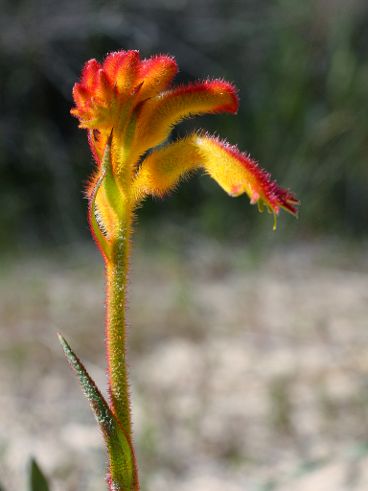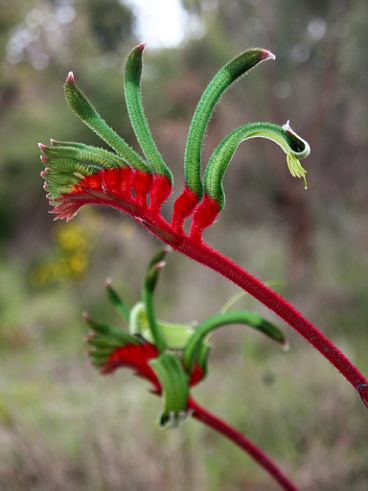Perth and the Swan Coastal Plain, Western Australia
Overview
Located in the Swan Coastal Plain, Perth is the capital of Western Australia and the state’s most populous city. Perth enjoys a pleasant Mediterranean climate with hot, dry summers and mild, wet winters. While much of the metropolitan area has been cleared for development, a few pockets of remnant bushland have been preserved to protect some of the region’s unique flora and fauna.

Rottnest Island
Located about 20 km off the coast, Rottnest Island is one of the prime holiday destinations near Perth. The island’s white, sandy beaches are popular with tourists and locals alike. Several sheltered bays provide perfect conditions for snorkeling, with numerous colourful corals and fish inhabiting the shallow waters surrounding the island.
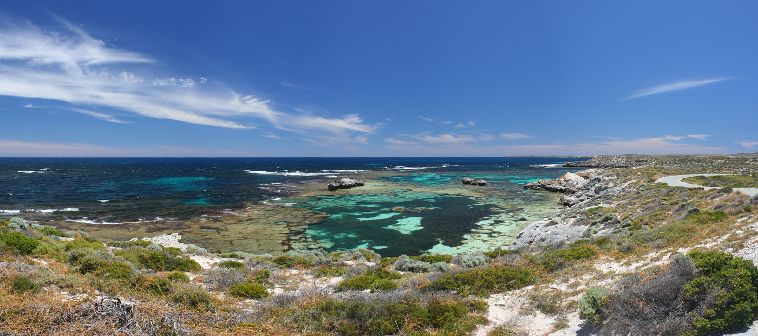
Rottnest Island is most famous for its Quokkas (Setonix brachyurus). These small kangaroos were once widespread across south-western Australia, but are now restricted to just a few remote areas and offshore islands as a result of predation from introduced pests. Rottnest Island is one of the last refuges for this iconic species. In fact, the island’s name literally means “rat nest”, a name created by early Dutch explorers who thought that the numerous Quokkas they had encountered on Rottnest Island were large rats.
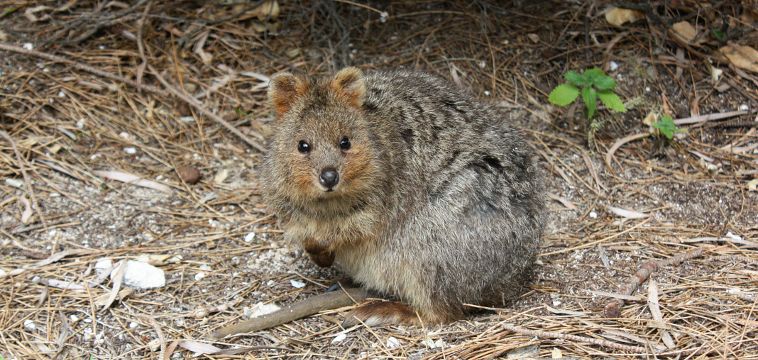
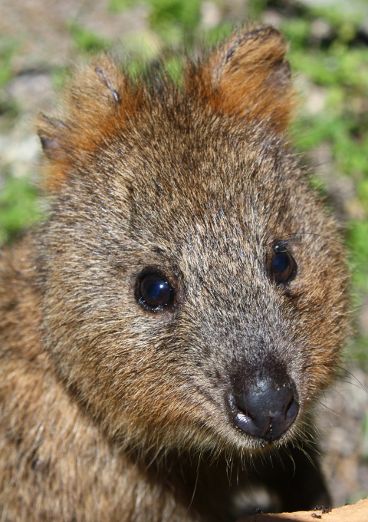
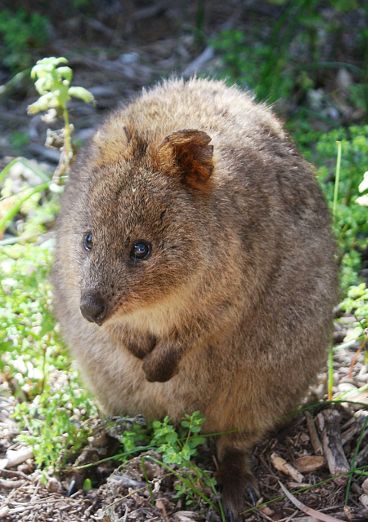
Fauna
Among the numerous parrots found in Perth the most colourful one is the Rainbow Lorikeet (Trichoglossus haematodus). Originally from eastern Australia, Rainbow Lorikeets were introduced to Western Australia in the 1960s and are now regarded as a common and widespread pest in the Perth area. As with many parrots, they are rather noisy and often assemble in small groups to feed on seeds and fruits during the day.
Other iconic birds that are common in the Perth area include the Laughing Kookaburra (Dacelo novaeguineae) and the Australian Magpie (Gymnorhina tibicen). The Laughing Kookaburra is one of the largest species of Kingfisher in the world and famous for its loud call reminiscent of laughter. The Australian Magpie is among Australia’s most intelligent birds and well-known for its complex, melodic calls. Magpies are even capable of mimicking the calls of other birds. Being fairly large in size, they are also feared for their habit of fiercely defending their nest during the breeding season.
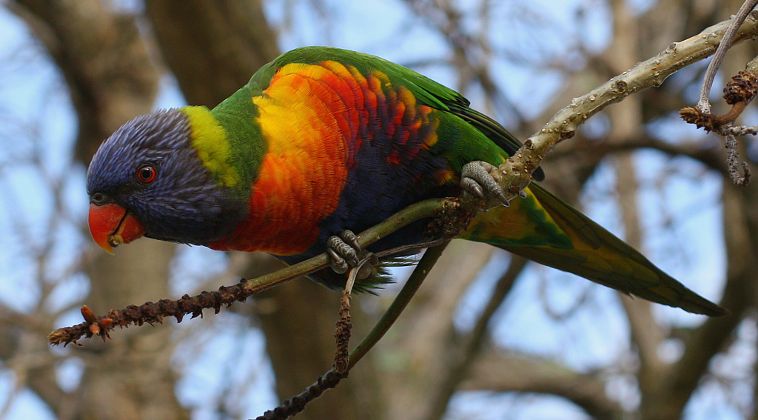
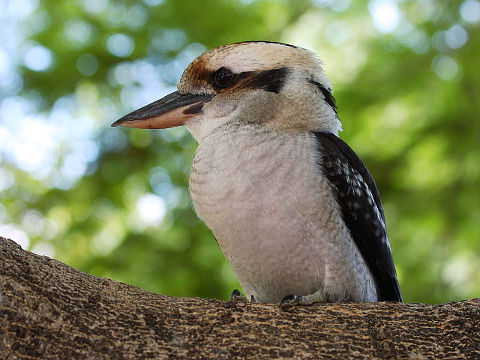
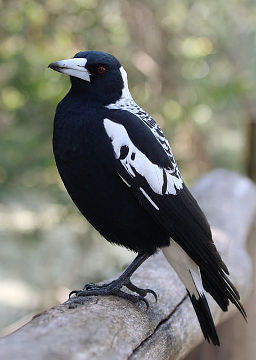
The most iconic among the many reptiles in the Perth area is undoubtedly the Bobtail Lizard (Tiliqua rugosa), also known as the Shingleback. This curiously looking creature is abundant in bushland in and around Perth and is often seen basking in the sun during the day. When they feel threatened, Bobtail Lizards will widely open their mouth and reveal their blue tongue to scare off predators.
Another iconic lizard found in Perth is the Western Bearded Dragon (Pogona minor), which is one of the most docile reptiles. Instead of fleeing, it relies entirely on its camouflage when being approached. Bearded Dragons usually display their spiny beard only as part of their mating ritual or to fend off rivals.
Numerous other reptile species are commonly encountered across the Perth metropolitan area, in particular several different species of Skink such as the tiny Buchanan’s Snake-eyed Skink (Cryptoblepharus buchananii) with its characteristic, large eyes. Due to their secluded lifestyle, snakes are rarely encountered, although species such as the Carpet Python (Morelia spilota) or the highly venomous Tiger Snake (Notechis scutatus) are generally common and widespread.
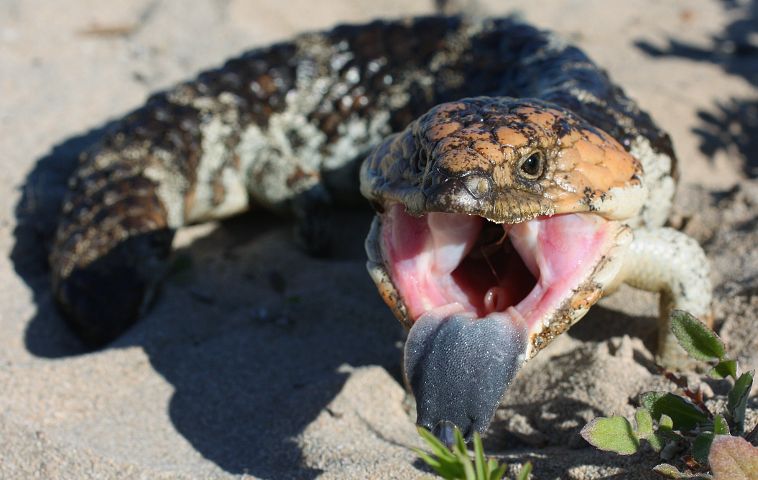
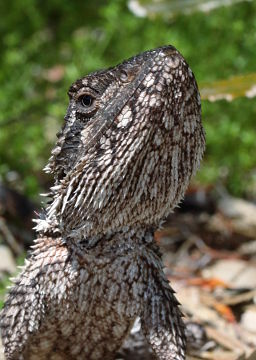
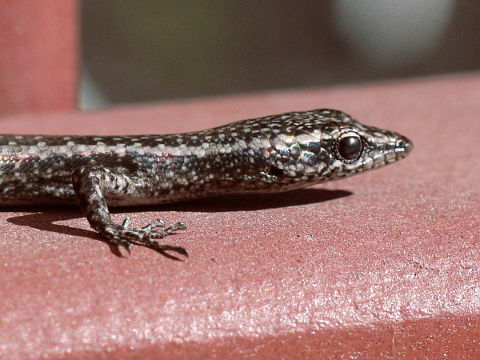
Butterflies
While there are generally very few butterflies in Western Australia, Perth is blessed with a surprisingly large variety of species. What’s more, a significant number of Perth’s butterfly species is endemic to south-western Australia and found nowhere else in the world. Among the more commonly encountered butterflies are several species of Blue and Hairstreak (Lycaenidae), including the beautiful Long-tailed Pea Blue (Lampides boeticus) which is a regular visitor to suburban parks and gardens. Incidentally, this magnificent species is one of the world’s most common and widespread butterflies and can be found on all continents except America and Antarctica.
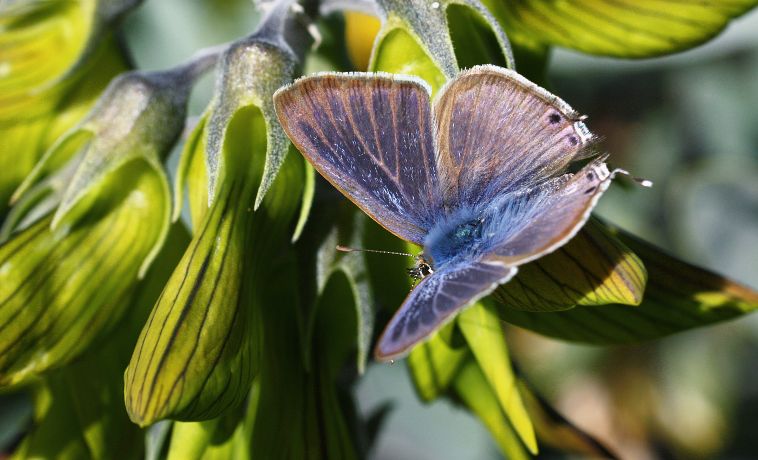
Other Blues are restricted to remnant bushland in and around Perth, including the Blotched Dusky Blue (Candalides acasta), the spectacular but uncommon Copper Dusky Blue (Candalides cyprotus) and the Rayed Blue (Candalides heathi). All three species are widespread throughout the temperate regions of Australia and display spectacular iridescent colours on the upperside of their wings. Another common species of native bushland is the Western Australian subspecies of the Fringed Heath Blue (Neolucia agricola subsp. occidens).
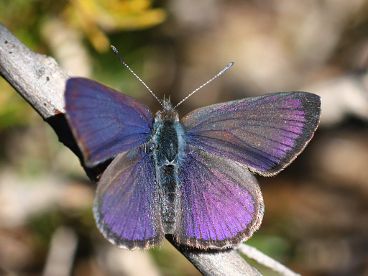
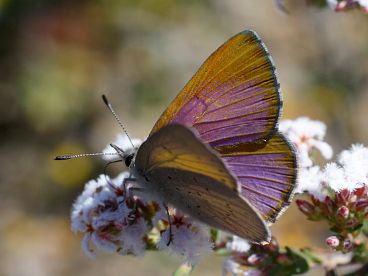
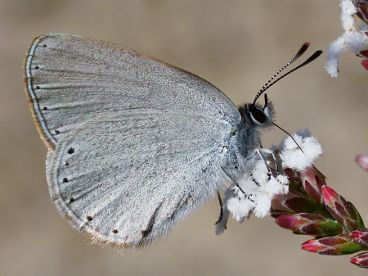
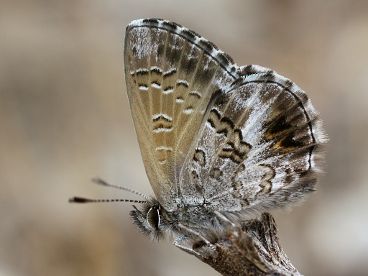
A real treasure of remnant native bushland in Perth is the Turquoise Jewel (Hypochrysops halyaetus). This spectacular butterfly is endemic to Western Australia, and Perth marks the southern limit of its geographic range. Turquoise Jewels display spectacular iridescent colours on the upperside of the wings, while the bright orange underside is covered with a characteristic pattern of iridescent silvery patches.
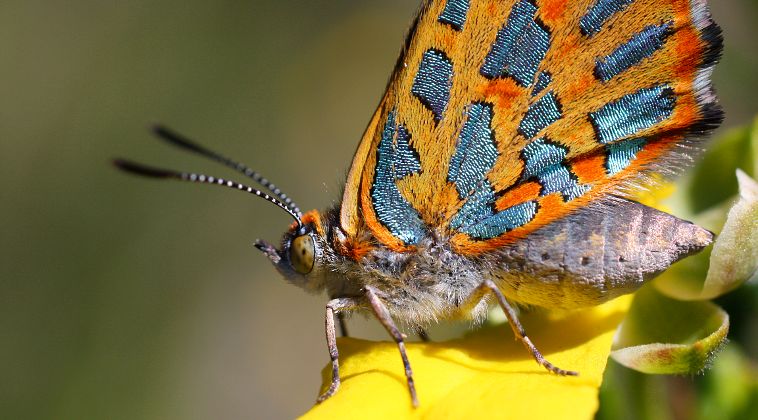
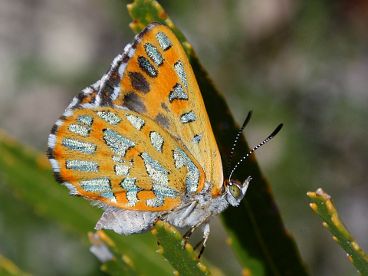
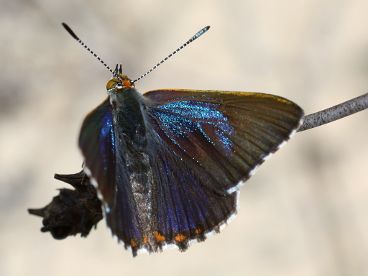
Another species endemic to Western Australia is the Varied Hairstreak (Jalmenus inous) which is usually found in large numbers in coastal areas where the caterpillars feed on different Acacia species. While the underside looks relatively inconspicuous, the iridescent blue suffusion on the upperside of the wings creates a spectacular display, in particular on sunny days.
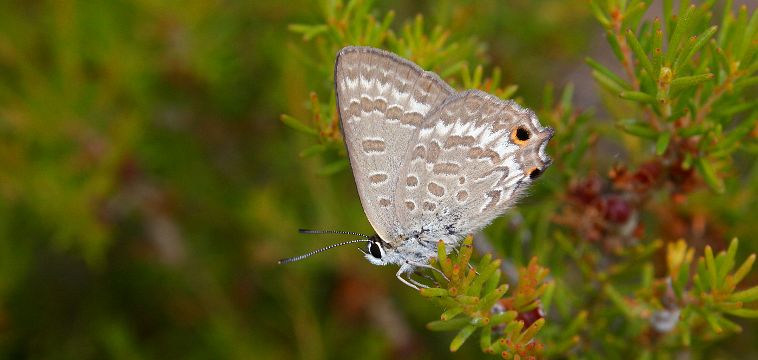
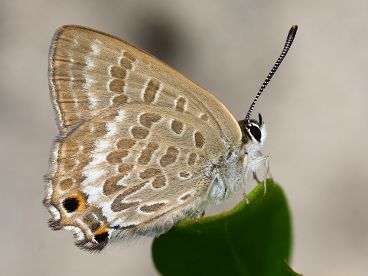
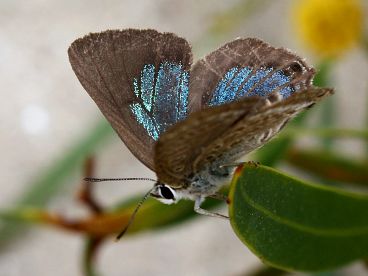
Another common butterfly of the Perth area is the Western Xenica (Geitoneura minyas). It too is endemic to south-western Australia and abundant in native forests and woodland. The Western Xenica is closely related and remarkably similar to the Marbled Xenica (Geitoneura klugii) which is common and widespread across southern Australia. In the Perth area, both species are often found flying together at the same time of the year, making identification challenging. Fortunately, there is an easy way to tell the two species apart: the Western Xenica has black eyes, whereas the eyes of the Marbled Xenica are grey-brown.
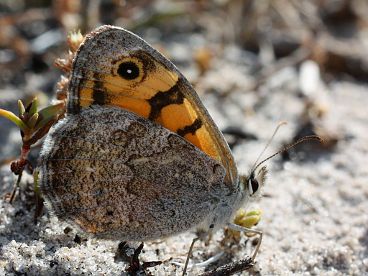
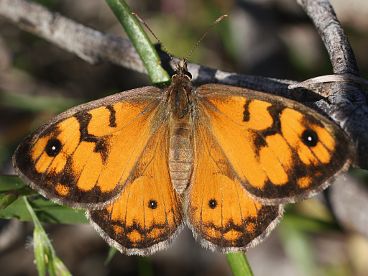
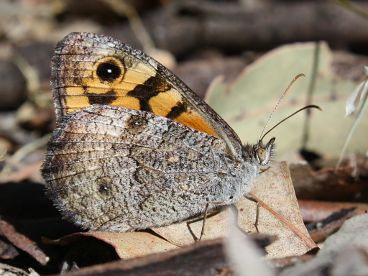
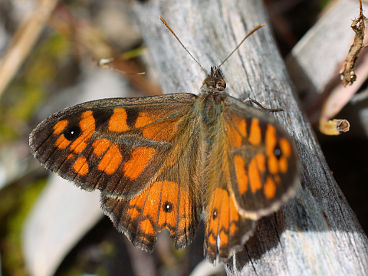
Several other characteristic species of Skipper (Hesperiidae) are found in Perth, including the widespread White-banded Grass Dart (Taractrocera papyria). While this species is also found in south-eastern Australia, the Western Australian populations belong to a different subspecies, agraulia. Two more species encountered in remnant Banksia woodland across Perth include the Blue Iris Skipper (Mesodina cyanophracta) and the Western Brown Skipper (Motasingha dirphia). Both are endemic to south-western Australia and are on the wing in late spring.
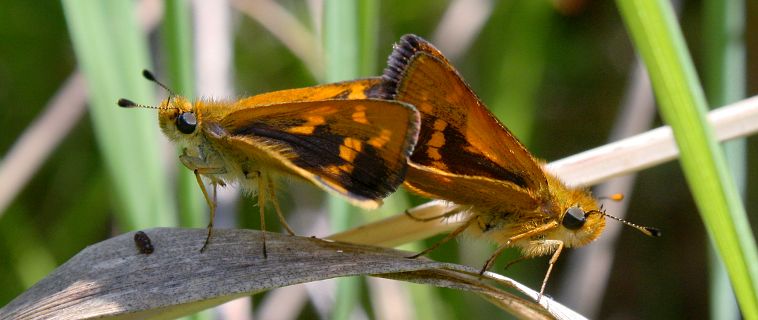
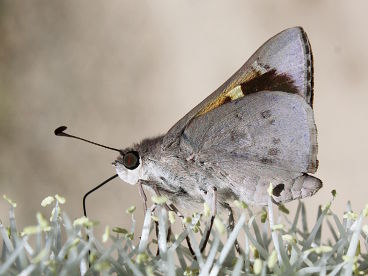
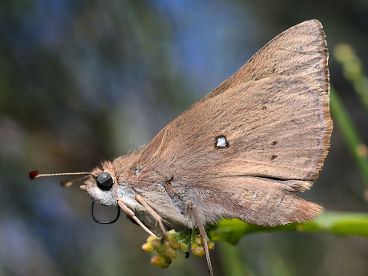
Another rather handsome Skipper endemic to Western Australia is the Silver-spotted Ochre (Trapezites argenteoornatus) which is found along the west coast of WA and is common in coastal heathland around Perth during the spring. In contrast, the equally abundant Wedge Grass Skipper (Anisynta sphenosema) is one of very few butterfly species of Perth that are active during autumn rather than spring. It is a common visitor to suburban gardens and is another one of Western Australia’s endemic species, underlining the high degree of endemism that makes south-western Australia one of the world’s prime biodiversity hotspots.
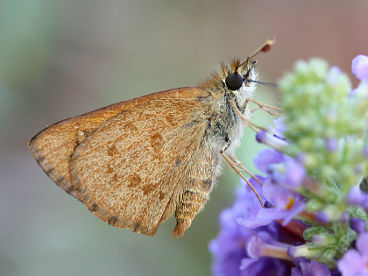
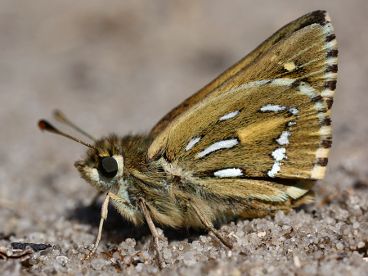
Orchids
The numerous parks and bushland areas in and around Perth are a paradise for native orchids. Among the most recognisable orchids are the aptly named Donkey Orchids (Diuris) with their characteristic “donkey ears” formed by the two petals. By far the most common species found in Perth is the Pansy Orchid (Diuris magnifica) which can be found in large numbers in remnant bushland across the metropolitan area. Their beautiful yellow and purple flowers are a delight to see during late winter and early spring, often forming large colonies of sometimes hundreds of individual plants.
Although not quite as abundant as the Pansy Orchid, several other Donkey Orchids can be found across the Swan Coastal Plain, including the early-flowering Winter Donkey Orchid (Diuris brumalis) which can be seen in July and August. Unfortunately, many of the Donkey Orchids are notoriously difficult to tell apart, as they all look rather similar, and even experts appear to be struggling to identify certain specimens or even agree on how many species there are in total.
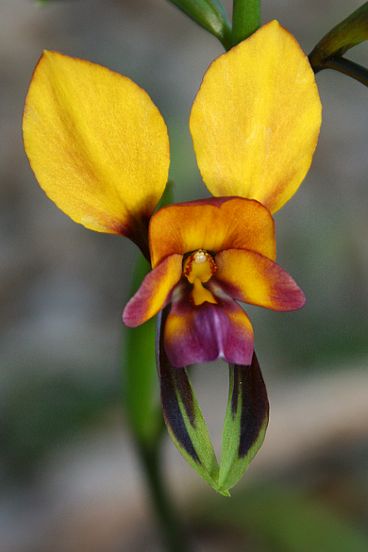
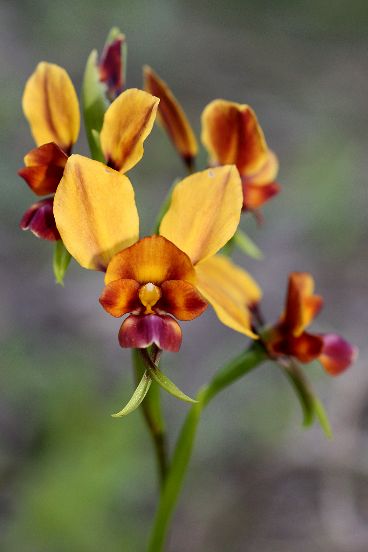
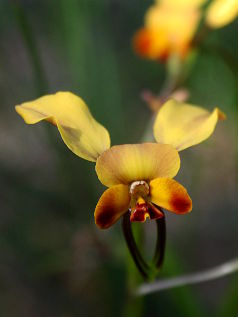
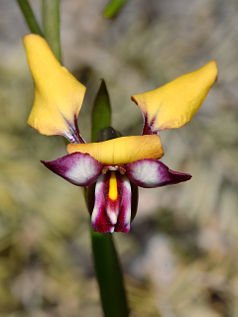
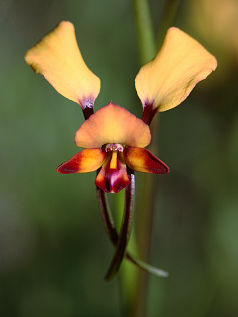
Among the most spectacular orchids of Perth and the Swan Coastal Plain are the Spider Orchids (Caladenia). A characteristic species of native bushland across the Perth metropolitan area is the Antelope Orchid (Caladenia discoidea) with its magnificent green and red flowers. Despite its unique appearance, the Antelope Orchid is easily overlooked as its flowers perfectly blend in with the surrounding vegetation. Another relatively common species found in remnant bushland across Perth is the White Spider Orchid (Caladenia longicauda) with its long, almost purely white petals and sepals. White Spider Orchids are common and widespread across all of south-western Australia and often form hybrids with other species of Spider Orchid.
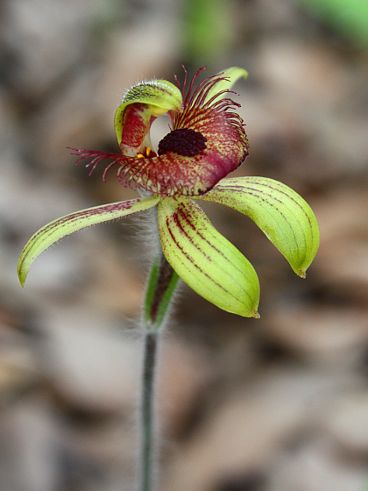
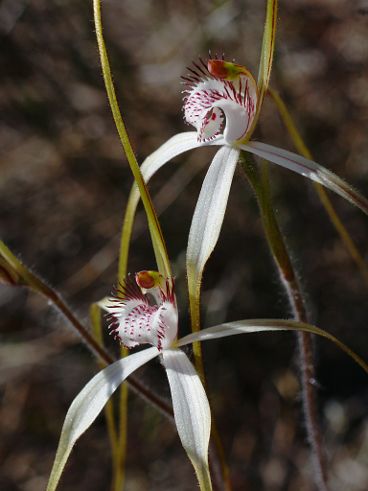
One of the most beautiful Spider Orchids of Perth is undoubtedly the Carousel Spider Orchid (Caladenia arenicola). This magnificent species is still reasonably common in remnant bushland throughout the Perth area and comes in a variety of different colours. The Carousel Spider Orchid often hybridises with other Spider Orchids, including the White Spider Orchid (Caladenia longicauda) and the very similar Tuart Spider Orchid (Caladenia georgei), making identification of individual specimens difficult in some cases.
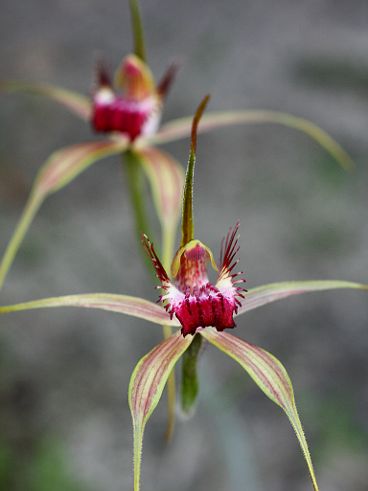
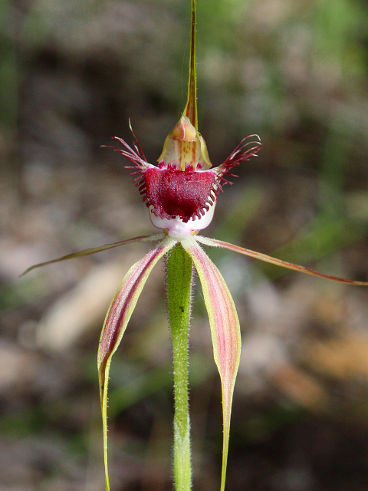
Another relatively common species of Spider Orchid is the Swamp Spider Orchid (Caladenia paludosa) which, as its name suggests, is restricted to swampy areas. While superficially similar to the Carousel Spider Orchid, it is readily distinguished by its characteristic anvil-shaped labellum fringe segments and the fact that its petals aren’t clubbed and are pointing upwards rather than downwards. It is known to hybridise with the Carousel Spider Orchid in places where both species grow together.
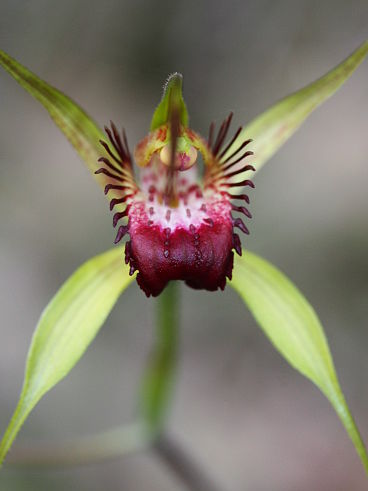
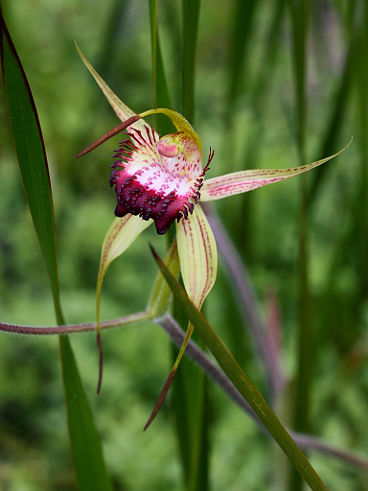
Several other species of Spider Orchid occur across the Swan Coastal Plain, but are far less frequently encountered. Although generally common and widespread, the Leaping Spider Orchid (Caladenia macrostylis) is rarely seen, which is partly due to its small size and rather dull colouration. Another rather small and inconspicuous species is the Yellow Spider Orchid (Caladenia denticulata) which prefers moist habitats such as forests and winter-wet flats and, despite its common name, can be either pale-yellow or dark-red.
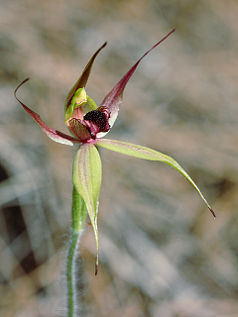
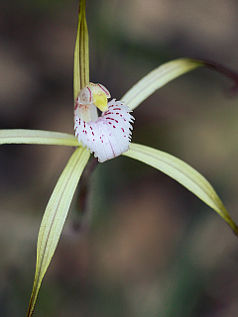
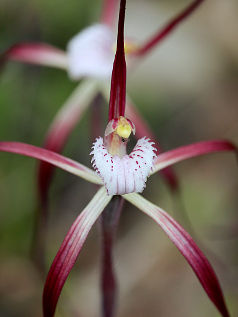
Two of the most abundant orchids of Perth are the Cowslip Orchid (Caladenia flava) and the Pink Fairy Orchid (Caladenia latifolia). Both are very common and widespread in native bushland and often form large clonal colonies. The Cowslip Orchid can be found in a variety of different habitats, while the Pink Fairy Orchid mainly occurs in forests and woodland where it usually forms small colonies underneath trees. Where they co-occur, the two species occasionally form a spectacular hybrid, the aptly-named Spectacular Spider Orchid (Caladenia × spectabilis), which by far outshines its two parents.
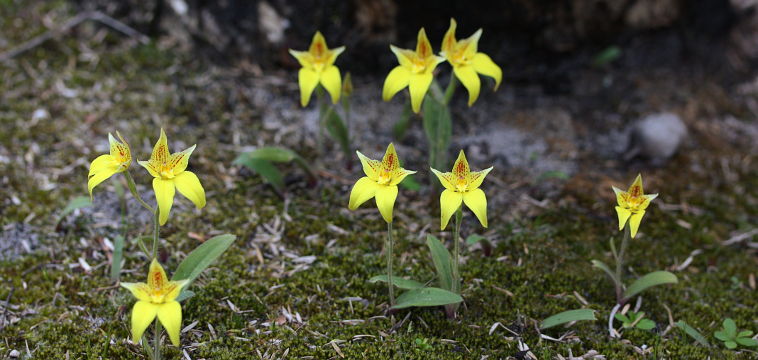
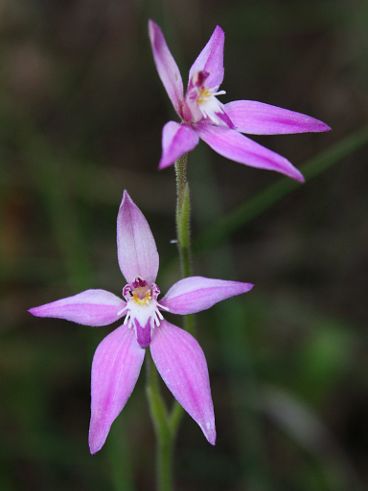
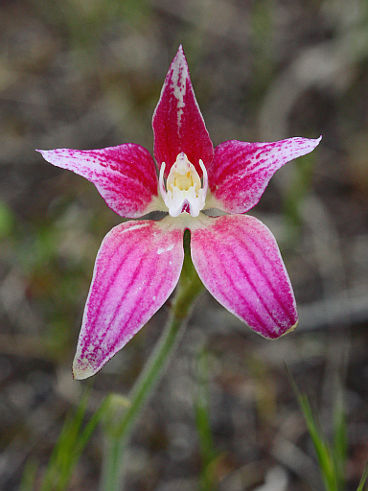
As their name suggests, Greenhood Orchids (Pterostylis) are almost entirely green and for that reason easily overlooked as they blend in with the vegetation. The two most common species in the Perth area are the Coastal Banded Greenhood (Pterostylis orbiculata) and the uniquely shaped Jug Orchid (Pterostylis recurva). Both can be found in large numbers in native forest and woodland throughout the city and adjacent coastal plain.
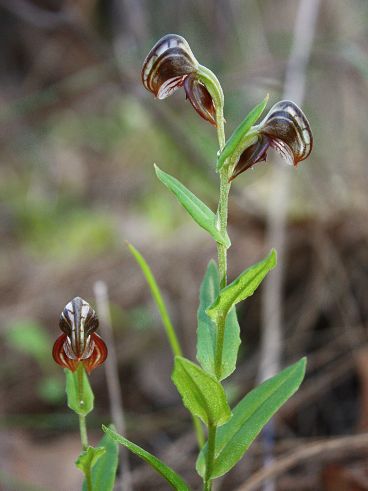
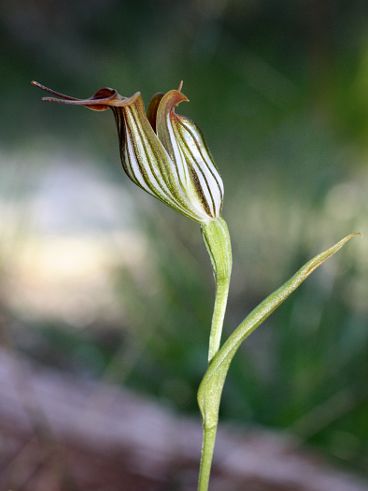
The spectacular Rattle Beaks (Lyperanthus serratus) are common across the higher-rainfall areas in the south-western corner of the state, with Perth being at the northern limit of their geographic range. Yet this magnificent orchid can still be found in good numbers in some of the remnant native bushland reserves across the city. Probably the most abundant of all orchids in Perth is the Common Mignonette Orchid (Microtis media). This inconspicuous species can be found almost anywhere in large numbers, including suburban gardens and parks, flowerbeds, and even roadsides and car parks.
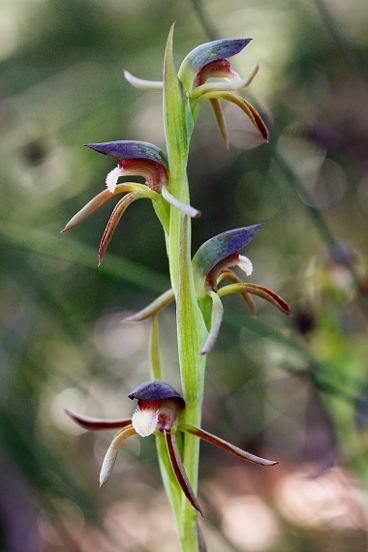
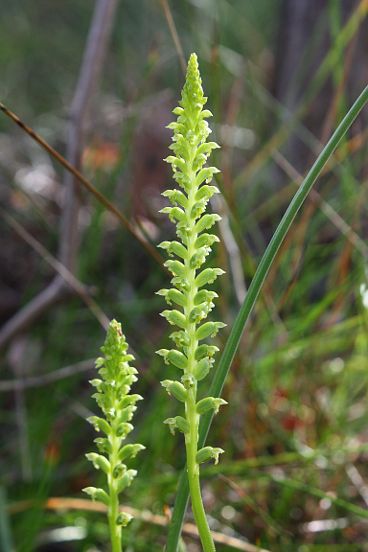
Wildflowers
Each year, in late winter and early spring, large numbers of colourful wildflowers emerge across Perth after decent winter rainfalls. A small selection of some of the most colourful flowers of the region is shown below. Not all of Perth’s wildflowers are native, though, as many exotic species have been accidentally introduced into the wild, usually as garden escapes originating from South Africa.
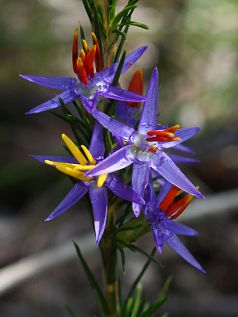
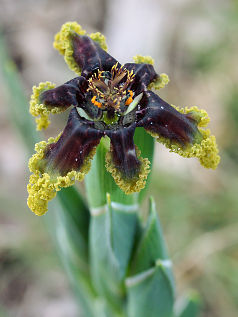
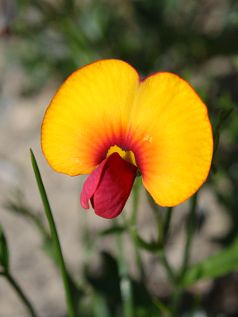
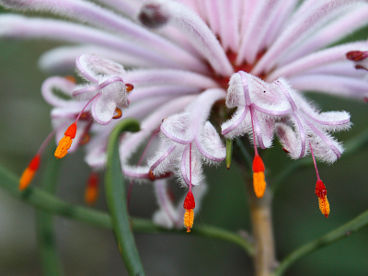
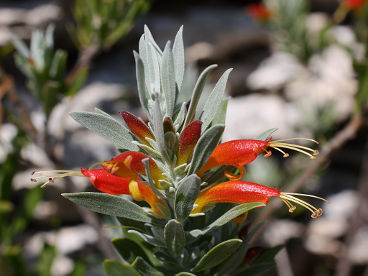
Among Perth’s most unique and spectacular wildflowers are the Cat’s Paw (Anigozanthos humilis) and the Red and Green Kangaroo Paw (Anigozanthos manglesii), the latter of which is the official state flower of Western Australia. Both species grow in well-drained, sandy soils and are abundant in native woodland during late winter and spring.
